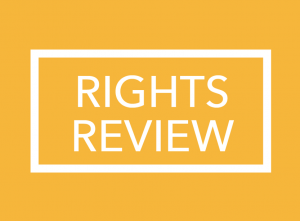Secondary menu
Message from the Editorial Board: A Tool, Not a Constitution
The role of international human rights law in conflict

Hello Readers,
Welcome to the final issue of our term. This edition comes at a particularly prickly moment for the international human rights machinery. With the almost anachronistic tone of the recent outbreak of war across the Atlantic, we are reminded somberly of the inefficacy of a system that claims to originate out of commonly held humanitarian values. Accustomed, instead, to distant proxy wars that deftly keep up the pretense of compliance, we find ourselves more incensed than our usual desensitization allows.
Against this backdrop sits the harsh reminder that diplomacy guarantees neither the preservation nor the swift restoration of peace. Enter international human rights law (IHRL), the professed arbiter of justice living in the interstices of failed politics. On March 16, the International Court of Justice delivered a ruling hailed as a “complete victory”, ordering Russia to suspend military operations in Ukraine. It was recognized immediately by onlookers for its impotence. What is the worth of binding law when the intended cannot be backed into a cell?
The answer is to see IHRL for what it is. In its moments of puffery, it can attempt to convey our collective rage. However, its practical strength lies in its remedial potential. It is naïve to expect what we falsely assume to be a universally accepted moral compass to elide harsher exertions of sovereignty and prevent resulting atrocities from ensuing in the first place. The more effective approach calls for us to focus on the role of international courts in the aftermath of war and destruction. The key perhaps is to first recognize the still-fledgling character of the system, so we can concentrate on honing its tools to maximize the delivery of restorative justice, and minimize the extent to which its language and mechanics can be co-opted to serve the hegemon’s rhetoric.
With that in mind, let us turn to our pieces. The first piece delves directly into the role of wartime weapons provision in facilitating human rights abuses, and how the introduction of appropriate human rights due diligence standards could mitigate the harm. The second piece is a follow up to our interview with Professor Kent Roach on his book on remedies for human rights violations. The write-up captures a roundtable discussion which expanded the conversation on remedies in human rights law beyond the Faculty to the bench and two preeminent scholars on international law. The final article highlights the regularly snuffed role of art in immortalizing conflict, and illuminates the role of human rights law in its emancipation. We hope each take edifies your view on the remedial utility of IHRL in quelling the harm of inevitable conflict.
Keep an eye out for some isolated coverage of rights this summer, otherwise that’s all from this year’s editorial board. We wish you an enjoyable read and a smooth-sailing exam season!
Sincerely,
Taskeen Nawab and Sabrina Sukhdeo
Co-Editors-in-Chief, Rights Review 2021-2022
